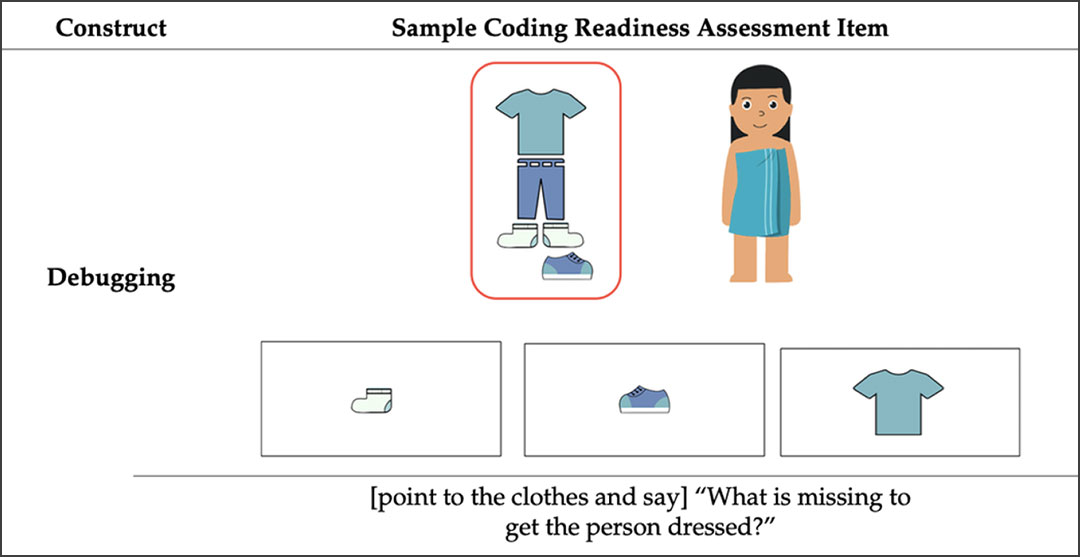Christopher Doss, John F. Pane, and Victoria Jones
If we want a broader, more diverse pipeline into high-demand tech fields, the work starts in preschool.
As the demand for digital skills continues to grow, early disparities in access to computing education are turning into long-term opportunity gaps. Students from low-income and historically marginalized communities are often the last to gain exposure to computer science, and by the time they do, the opportunity gap is already wide.
A new “coding readiness” curriculum introduces foundational computational thinking (CT) skills to pre-K children through playful, age-appropriate lessons. When implemented in Head Start classrooms, the curriculum significantly improved children’s CT skills and math development. This study provides promising evidence that foundational computing skills can be taught to young children, and more research is needed to determine whether those early skills lead to greater participation and success in computer science later in life.
STUDY CONTEXT AND METHODS
This study was a randomized controlled trial evaluating a 7-week “coding readiness” curriculum developed through a research-practice partnership between RAND, codeSpark (a learn-to-code platform), and the National Head Start Association.
- Curriculum: 18 lessons (13 did not require technology and 5 were app-based) covering seven CT domains, including sequencing, pattern recognition, and debugging. Lessons used everyday classroom materials and were designed to be 10–15 minutes each.
- Professional Development: Teachers received free online professional development through 10 asynchronous modules covering coding readiness and seven core computational thinking (CT) topics. Each module included lesson objectives, key terms, links to Head Start standards and assessments, classroom implementation guidance, and reflection questions to support understanding and application.
- Sample: 765 children in 60 classrooms across 42 Head Start centers in 13 states. Children were ages 3–5 and racially, linguistically, and developmentally diverse.
- Randomization: Centers were randomly assigned to implement the curriculum or continue with business-as-usual instruction.
- Measures:
- Child outcomes:
- A validated Coding Readiness Assessment (CRA) measuring overall and domain-specific CT skills
- Teacher ratings of math, literacy, and SEL skills from existing Head Start assessments (TS Gold or COR Advantage).
- Teacher outcomes:
- Surveys measuring beliefs, knowledge, and confidence related to teaching CT.
- Child outcomes:
The assessment and curriculum were designed to be developmentally appropriate and feasible to implement in early childhood classrooms with limited technology access.
KEY FINDINGS
The curriculum significantly improved children’s computational thinking skills.
Children who received the CT curriculum scored 0.66 standard deviations higher on a validated CT assessment than peers in control classrooms.- This is equivalent to moving a child from the 50th to the 75th percentile in CT performance.
- Significant effects were found in 6 out of 7 CT domains, including pattern recognition, debugging, and sequencing.
CT instruction increased teacher ratings of children’s math skills.
- In a subset of students with available Head Start formative assessment data, the curriculum improved teacher ratings of children’s math skills by 0.36 SD.
- There were no effects on literacy or social-emotional development.
- These results align with the fact that CT overlaps with many early math skills already emphasized in Head Start (e.g., pattern recognition), while literacy is a lesser focus and social-emotional skills are not addressed by the curriculum.
The curriculum showed positive effects across diverse student groups, suggesting it is promising for broadening early access to computing. While a larger study could reveal more nuanced differences across subgroups, these findings offer promising evidence that groups historically underrepresented in computing, such as girls, students from minoritized communities, dual language learners, and students with disabilities, all benefited from the curriculum. The significant gains among children as young as three and as old as five also suggest the curriculum is developmentally appropriate across a broad age range.
Teachers reported improved knowledge, confidence, and attitudes toward CT, especially novice and assistant teachers, but these findings were not statistically significant, likely due to limited sample size.
Figure 1: Example Question from Coding Readiness Assessment
Source: Relkin et al., 2024
POLICY AND PRACTICE IMPLICATIONS
Pre-K is a developmentally appropriate and effective time to introduce computational thinking (CT), especially for children from underrepresented groups.
Since CT concepts overlap with early math skills, integrating CT into pre-K instruction can boost math development.
Implementation with limited PD is feasible. Teachers successfully delivered the curriculum with only a 3-hour asynchronous professional development course. Despite no statistically significant changes in teacher attitudes (likely due to small sample size), novice and assistant teachers reported higher confidence and more positive views of coding and technology.
Co-developing a curriculum with educators and tailoring it for under-resourced classrooms can expand access to computing skills at a critical developmental window. The curriculum was intentionally designed to align with Head Start frameworks and pre-math skills, helping teachers view it as an extension, not an addition, to their regular instruction.
FULL WORKING PAPER
This report is based on the EdWorkingPaper “Teaching Computational Thinking to Children in Head Start Classrooms: Results from a Randomized Controlled Trial,” published in June 2025. The full research paper can be found here: https://edworkingpapers.com/ai25-1224
The EdWorkingPapers Policy & Practice Series is designed to bridge the gap between academic research and real-world decision-making. Each installment summarizes a newly released EdWorkingPaper and highlights the most actionable insights for policymakers and education leaders. This summary was written by Christina Claiborne.